ABAA-member Claudia Strauss-Schulson, her son Todd and daughter Caren, have written a book -- Scrawl: An A to Z of Famous Doodles -- based on the extensive collection of illustrated letters and sketches built by the late David Schulson, founder of David Schulson Autographs, Ltd. (now Schulson Autographs). We asked the three Strauss-Schulsons to tell us about the book and the collection on which it draws.
ABAA: How did this collection come about?
Claudia Strauss-Schulson: The collection began with the intent to combine art with history. The collection built out from illustrated letters to include drawings of all sorts from the full range of human endeavor. The criteria for selecting a letter or drawing for the collection had to do with adding diversity and curiosity as the collection grew.
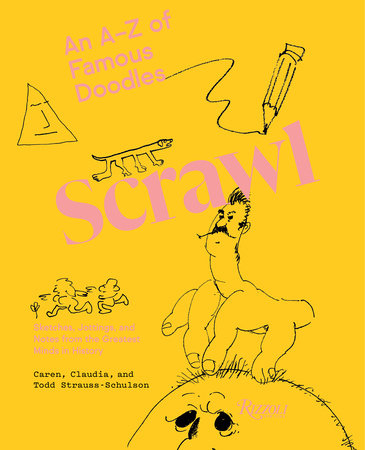
ABAA: How large is it?
Claudia: Larger than the number of pieces in Scrawl.
ABAA: You must come across doodles and marginalia all the time in your area of specialty. What gave you the idea to turn the collection into a book?
Todd Strauss-Schulson: In the months after Dad died, Caren and I had the idea of turning the private collection into an art book. Dad loved this material, and we grew up with it. The exciting part was not to do another historical book of letters, not academic or stuffy. We wanted to do an art book that contextualized this material as art objects, as we had learned from him.
Caren Strauss-Schulson: Our dad was the perfect balance of serious and playful, and Rizzoli completely translated this sensibility in the design of the book.
ABAA: What factors did you use to curate the materials that ended up in the book?
Claudia: Visual appeal, familiar names, cultural and historical range.
Caren: The pieces in the book are our favorites. It was important to us that the book appeals to all ages, targeting a younger demographic, and not just collectors.
ABAA: Which of you curated the selections? Were there any disagreements?
Caren: We all did it together over the course of a few weeks. The process was fun, we sat on the floor in the basement all together leafing through the collection and reminiscing and really seeing, as if it was the first time, the breadth and depth of this collection. The whole book is a celebration and a memorial. So, it was fun to work as a family and tend to his treasures. It’s surreal to have a tangible product that we as a family produced together.
.jpg)
ABAA: Is there anything that did not make the final cut that you wish would have?
Claudia: Yes, a sketch by Rene Magritte of an animal creeping out of a cap.
ABAA: What do doodles tell us about the artist or author?
Todd: There is something unconscious about a doodle. Your hand does it when your mind is busy doing other things. You doodle when you’re talking on the phone or bored in class or in a work meeting. They are almost like physicalized daydreams. What was so fun about growing up around this stuff was that I would sit in junior high and fill the margins of my textbooks with doodles, and then come home and dad had just bought some Eisenhower doodles on White House stationery. It obliterated any hierarchy. These great thinkers, artists, scientists, leaders… they all doodle. And their doodles are whimsical, and childlike in a way. Like mine. You get the sense that as a species, this drive to draw and create is fundamental. We all do it, it unifies and reveals our true nature in some ways.
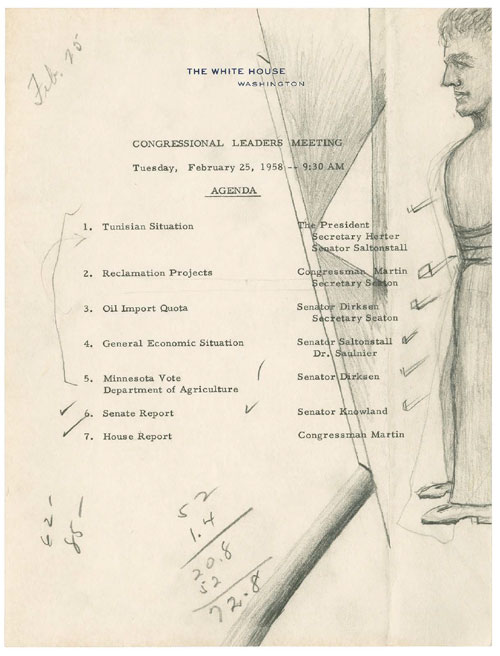
Caren: A doodle can also provide story and context, opening up a window to the thought process or “behind the scenes” of these great artists and thinkers. It can create a sense of intimacy and a deeper way to experience a person and their work.
ABAA: Do you think doodling is an art form we’re in danger of losing in the digital age?
Todd: Yes. Who wants to doodle when you can just send an emoji? We lose both the fun and insight doodling offers.
Caren: Everything is digital, I rarely have a pen or pencil in my hand. Both handwriting and the act of doodling is an art form we are in danger of losing, which is why this book is more important than ever!
Claudia: Doodling is also relaxing; it’s playful.
ABAA: Do you each have a favorite drawing or doodle in this book?
Claudia: In Scrawl, my personal favorite is Churchill’s signed and dated sketch of a Spitfire (or Hurricane).
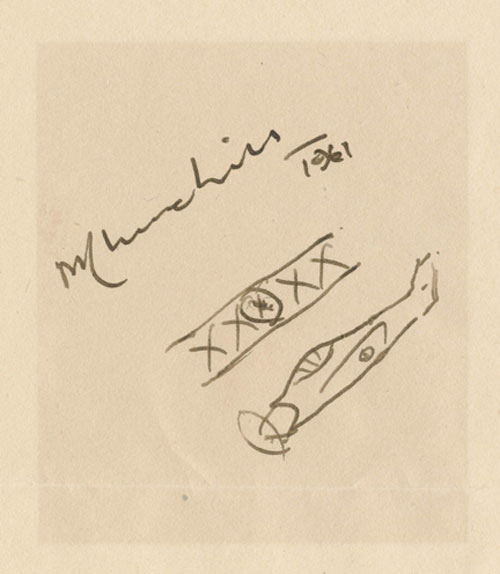
Todd: When I was seven, Dad would torture me with this Roland Topor. I thought the image was so scary—a field of women’s heads growing out of the ground like cabbage. Hair being braided… it was eerie in a way that gave me nightmares. And each night before bed dad would take the framed drawing off the wall and walk it into my room and say goodnight with it in his hands… like a prank! I had nightmares about it for years. Today it’s on the wall of my apartment… because I’m not scared anymore.
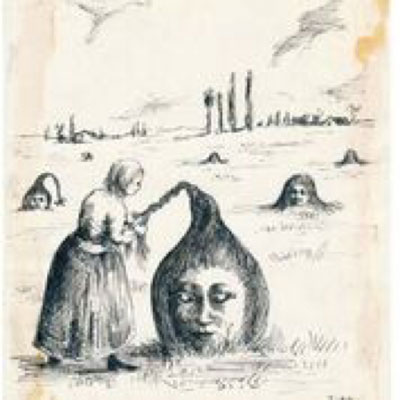
I remember the day Dad bought a collection of these pornographic dick pics by Fellini. He showed them all to me all giddy, explaining that they were hilarious self-portraits and that Fellini was a cartoonist before he was a filmmaker. In one drawing his penis was yelling at him, in the one pictured here a jockey is riding his phallus. I loved them… my mother, on the other hand, hated them. Dad wanted to put them on the walls of the house, I vividly remember her saying to him “over my dead body, and keep them away from the kids!” For me, it’s a personal victory to get one of these in the book. Dad is somewhere giggling at it still.
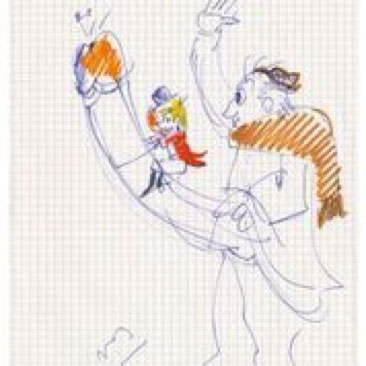
Caren:
(1) Claude Monet: I love the use of doodling in this autograph letter by Claude Monet. It was written to his art supplier while painting his very famous Water Lilies series. In this letter, he is ordering a dozen flat brushes that he needs in order to complete his works. He sketches the brush, to ensure nothing gets lost in translation, demonstrating the exact dimensions of the flat paintbrush. I love seeing this impressionist painter doodle for a very practical purpose.
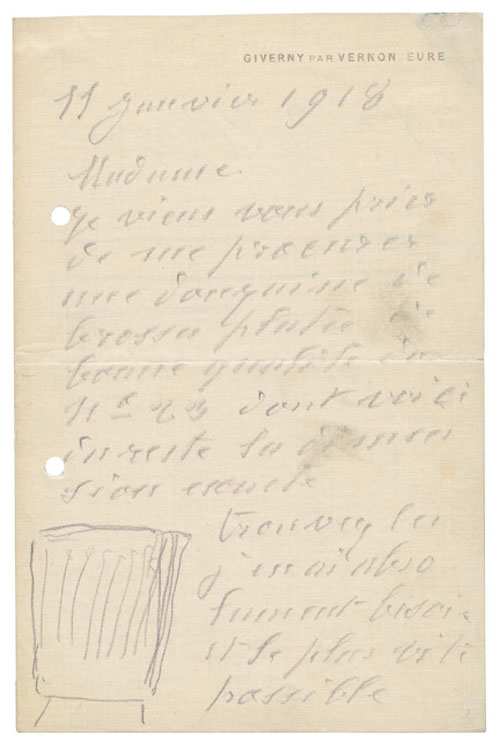
(2) Antoine de Saint-Exupery: Growing up The Little Prince was my favorite book. To this day it is the only book I have ever read in one sitting. This original pencil sketch hung outside my bedroom door and would evoke the same emotions I felt when first reading the story. Seeing the author’s early depiction of the Little Prince offers a window into the thought process of the character, a sense of intimacy and a deeper way to experience the work. I also can't forget the sketch of the Boa Constrictor swallowing an elephant which, as stated in the book, resembles a hat and always brings a smile to my face.
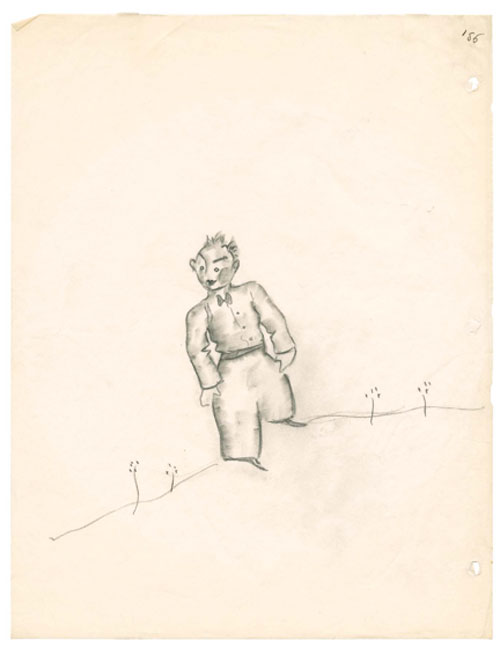
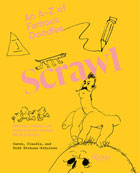
Scrawl: An A to Z of Famous Doodles
Written by Claudia Strauss-Schulson, Todd Strauss-Schulson, and Caren Strauss-Schulson (New York: Rizzoli Publishers, 2019) is now available.


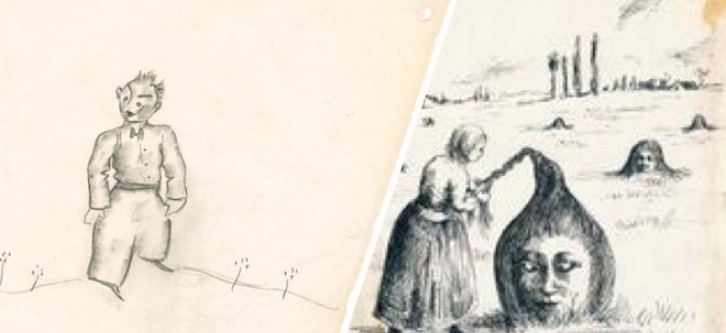

.jpg)






